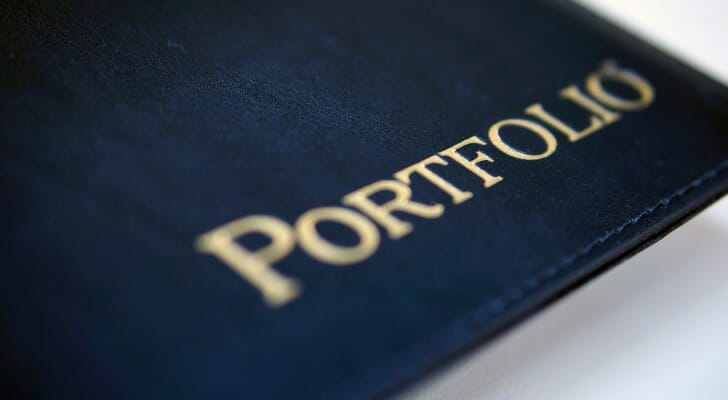How to Create a Permanent Portfolio
Determining how to allocate assets in your investment portfolio is important. A permanent portfolio allocation can minimize the impact changing economic conditions could have on your investments. The concept, developed by...Saturday, March 7th 2020, 7:04 pm
By Rebecca Lake
 Determining how to allocate assets in your investment portfolio is important. A permanent portfolio allocation can minimize the impact of economic changes on your investments. The concept, developed by investment advisor Harry Browne, takes a simplified approach to asset allocation.
Determining how to allocate assets in your investment portfolio is important. A permanent portfolio allocation can minimize the impact of economic changes on your investments. The concept, developed by investment advisor Harry Browne, takes a simplified approach to asset allocation.
What Is a Permanent Portfolio?
A permanent portfolio typically fares well in varying economic conditions. This type of portfolio performs consistently whether the economy is booming or sliding into a recession. This strategy should, in theory, insulate investors against market risk and growth.
Following Harry Browne’s definition of a permanent portfolio, your asset allocation would involve equal 25% portions of the following:
- U.S. stocks
- Treasury bills
- Long-term Treasury bonds
- Gold
Essentially, you’re diving your portfolio into a pie with four equal parts, each one representing a different type of asset. The idea is that each asset can act as a check and balance against the others. If one falters because of changing economic conditions, the others would be there to pick up the slack.
Permanent Portfolio Pros As with any other allocation strategy, it’s important to consider both the good and the bad with a permanent portfolio. This strategy can relieve pressure when choosing investments.
As with any other allocation strategy, it’s important to consider both the good and the bad with a permanent portfolio. This strategy can relieve pressure when choosing investments.
By breaking your portfolio up this way, you’re accepting that the market moves in cycles. Volatility is a natural part of those cycles. You’re not trying to predict which way an investment or asset class will move or time the market at all.
Instead, you’re relying on proper diversification to steer you and your portfolio through changing economic seasons. The permanent portfolio model outlined earlier contains four asset classes that aren’t strongly correlated to one another. So you can better balance out dips in performance in one asset class with stronger performance elsewhere.
A permanent portfolio also has the potential outperform other portfolio construction models. For example the three-fund model splits assets between U.S. stocks, international stocks and the total bond market. That structure can minimize the losses during a downturn. Meanwhile, it can even out total portfolio returns over the long-term.
This type of approach can also be cost- and tax-efficient. However, it depends on which investments you use to fill in each section of your pie. For example, you could base your allocation on index funds or exchange-traded funds. Both can offer cost-efficient passive investing. ETFs can also offer the advantage of having a lower turnover ratio. That means your investments trigger fewer capital gains tax events.
Permanent Portfolio ConsFirst off, you’re only getting 25% exposure to stocks. Depending on your age, how long you have to invest and your overall goals, this might be too conservative . Generally, the younger you are the more risk you can afford to take. Consequently, limiting yourself to just 25% stocks earlier in your investing career may mean limiting growth. A 60/40 portfolio, on the other hand, puts 60% split into stocks and the remainder into bonds. That allocation could outperform a permanent portfolio in the long run.
Another potential downside is that stock allocation is concentrated on U.S. companies. You don’t get any exposure to international stocks or emerging markets.Thosecould add another layer of diversification to your portfolio. Once again, that can translate to missed opportunities.
Reliance on gold can also be problematic. Gold and other precious metals can offer a hedge against inflation in a portfolio.. However you may not seem the same level of return performance over time as you might with stocks.
While having bonds in your portfolio can help with mitigating risk, another issue with a permanent portfolio is that you’re focused exclusively on Treasury bonds. That means you’re not taking advantage of the return potential and stability that corporate, municipal and other bond types might offer.
Creating a Permanent PortfolioConstructing a permanent portfolio hinges on deciding how to invest, not what to invest in. So again, you could use index funds or exchange-traded funds that represent each of the four asset classes mentioned earlier to represent your portfolio. There are plenty of funds and ETFs that invest exclusively in U.S. stocks, Treasury bills, Treasury bonds and gold, respectively.
Another route is to invest in a mix of funds and direct investments. So for example, you might hold two mutual funds, one representing the total U.S. stock market and the other representing the U.S. bond market. Then you might also invest directly in Treasury bills and gold bullion bars or coins.
Once you have your permanent portfolio set up, managing it is fairly straightforward. You’d want to review your asset allocation at least once annually to make sure you’re staying on track with your 25% targets for each category. If you’ve become heavy in any one area, you could rebalance to bring your portfolio back in line.
The Bottom Line A permanent portfolio can take some of the stress out of investing. You’re building a portfolio based on a template, which might appeal hands-off investors. Just remember that it’s not the only way to build a portfolio. As a result, it’s helpful to look at all the options when allocating assets.
A permanent portfolio can take some of the stress out of investing. You’re building a portfolio based on a template, which might appeal hands-off investors. Just remember that it’s not the only way to build a portfolio. As a result, it’s helpful to look at all the options when allocating assets.
- Consider talking to your financial advisor about whether a permanent portfolio is right for your situation. If you don’t have an advisor yet, finding one doesn’t have to be hard. SmartAsset’s free tool matches you with financial advisors in your area in 5 minutes. If you’re ready to be matched with local advisors that will help you achieve your financial goals, get started now.
- There are many ways to build a portfolio and various strategies you can use. For example, strategic asset allocation, dynamic asset allocation and tactical asset allocation all work differently. Take time to consider what your goals are as an investor. Find your investment personality or style. That can help you decide which method for building a portfolio most closely fits what you need.
Photo credit: ©iStock.com/fotofrog, ©iStock.com/utah778, ©iStock.com/kate_sept2004
The post How to Create a Permanent Portfolio appeared first on SmartAsset Blog.
Information contained on this page is provided by an independent third-party content provider. Frankly and this Site make no warranties or representations in connection therewith. If you are affiliated with this page and would like it removed please contact pressreleases@franklymedia.com
More Like This
March 7th, 2020
December 12th, 2024
December 12th, 2024
December 12th, 2024
Top Headlines
December 12th, 2024
December 12th, 2024
December 12th, 2024
December 12th, 2024






